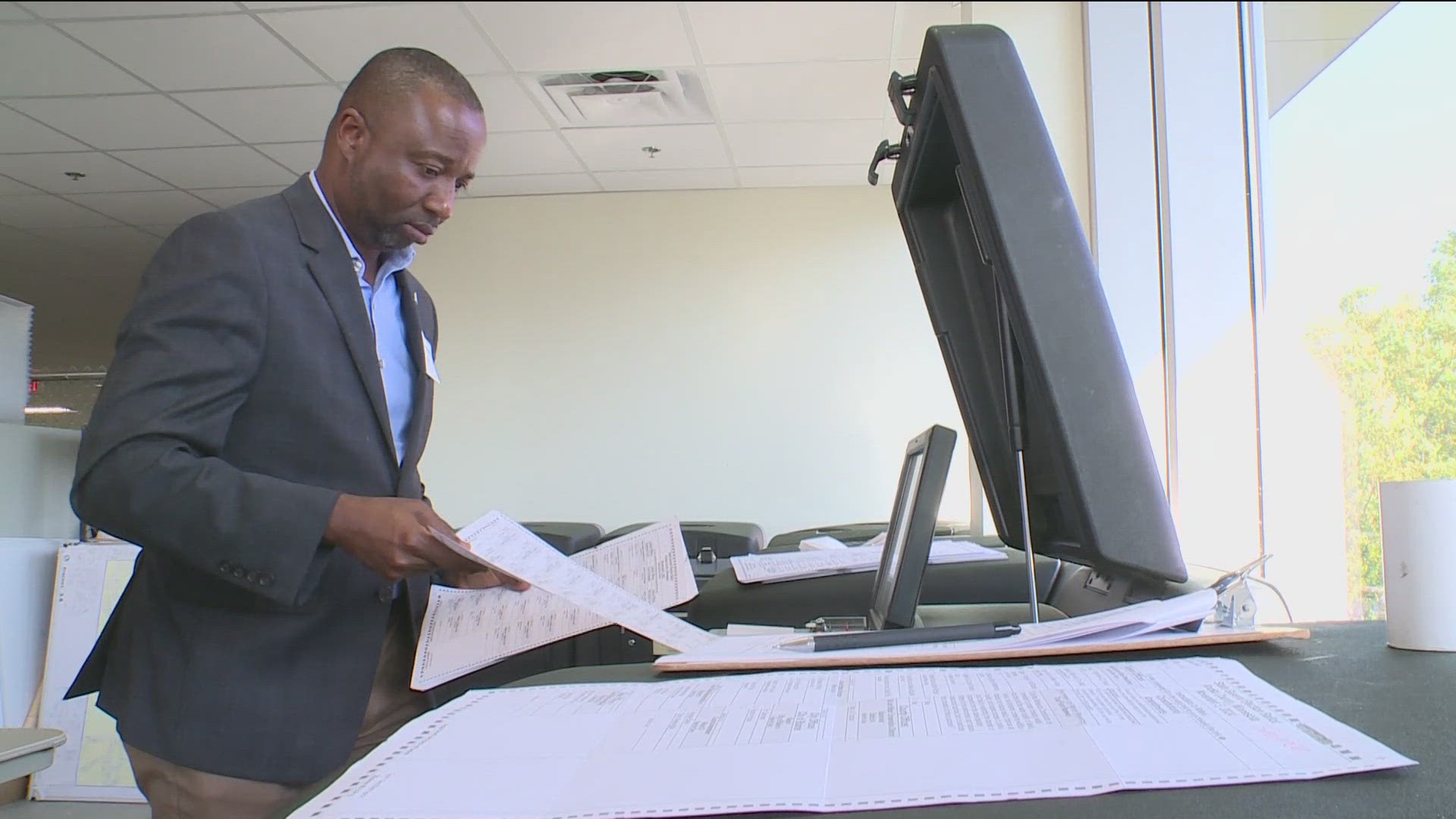BLAINE, Minn. — The third floor of this town’s city hall is off limits to the public, except when it comes to showing constituents the vote counting equipment is working.
Blaine City Clerk Cathy Sorensen Thursday hosted the public accuracy test for her city's vote-counting machinery and invited news cameras to come along for the ride.
"The public accuracy test is a great way for anyone from the public to come in and just see for themselves that the machines are working how they are supposed to work," Sorensen told KARE.
It's more than just a show-and-tell event. The public accuracy test is part of state law. Every vote tabulating machine in the state has to be tested before each election, and those tests must be open to the public.
Sorensen's staff had already tested all 32 of their vote scanners before Thursday but re-tested three of them to show the media how the process works. The exercise serves the dual purpose of ensuring accuracy and building public confidence in the integrity of the election system.
Minnesota Secretary of State Steve Simon, who accompanied Sorensen for the accuracy test, said any machine that fails the exam can't be used on Election Day.
"They try to trick the elections equipment, to make sure it’s up to snuff for Election Day," Simon explained.
"They’ll do things like put stray marks on it, they’ll crease it or fold it, they’ll overvote or undervote, or do things they’re not supposed to do, all to try to trick the machine to see if it catches it."
One of the ballots rejected by a tabulator in Blaine's test had part of its unique location code scribbled over with ink. That code is designed to ensure the ballot came from the correct precinct.
"It’s a way to make sure that somebody doesn’t bring in a ballot, on their own on Election Day from home," Sorensen explained.
"So, those ballots are printed and those sequence marks are unique for that precinct. It would be very difficult for somebody to know that code. The sample ballots you can print don't have real codes on them."
Under normal circumstances, the media can't get anywhere close to the third floor where the tabulator machines are stored. It takes a special badge to get on the floor, and there's a series of locks that can't be opened with a master key.
It's even tougher to access the secret location where absentee ballots are stored waiting to be counted.
"Even getting into the actual election cage there’s an old school padlock that only election officials have, and again it’s just one more layer to make sure we have that chain of custody and that confidence no one was able to access without one of us," Sorensen said.
The machines themselves are also protected from online tampering.
"We have a rule in Minnesota; no connection to the Internet during voting hours, 7:00 a.m. to 8:00 p.m," Simon said.
"We have these public accuracy tests on the front end, and then remember on the back end we have good old-fashioned paper. We're a paper ballot state. We don't touch finger on a screen, we actually vote the old-fashioned way."
Simon said those ballots are stored for two years and can be used to settle any challenges to the machine count.

